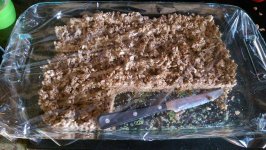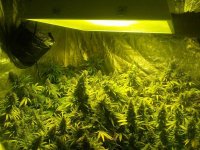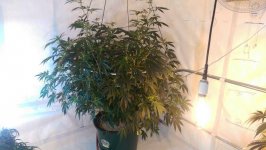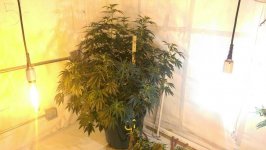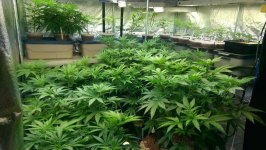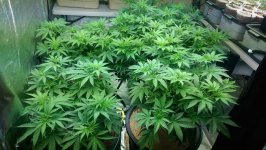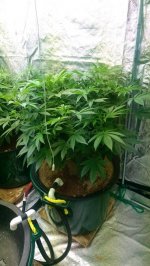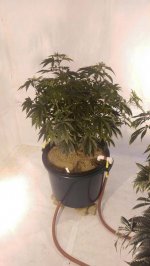av8or
Member
this is a tough one! the plant is a mole counter. 1,2,3,4,5,6,7 all day long. it doesn't do this with a calculator or an abacus. it does it by accumulating the product of photosynthesis. which is a photochemical process. photon by photon.
let's take the 1500 umol figure, which drives the plant at the maximum rate of photosynthesis. this is an instantaneous figure. a momentary measurement of photon flow.
from this we can extrapolate the total number of photons per day hitting the plant. expressed as moles. 1500 x 3600 (number of seconds per hour) x 12 (hours of exposure) / 1,000,000 (number of umols per mole).
using this math we see that we can deliver 64.8 moles per 12 hour period indoors. to at least one part of the plant. without over-driving it causing photo-inhibition.
this is a huge number to the plant. very few places on earth get this amount of light in a single day outdoors.
the u of arizona keeps daily records of light received and their highest readings were at 72-74 moles per day.
but if you were to bombard the plant at these levels all day long you would be dangerously close to saturating the mechanism and causing photo-inhibition.
this is all still very experimental, but it does look as if shifting the light from point to point around the plant is beneficial.
where and how much is unknown and we see people trying all sorts of stuff like light movers and multiple bulbs.
i know i got more weight by flipping my bulbs up and down on big plants but is it worth it on smaller plants?
one of my vegging schemes is using an 8-4-8-4 light period. 8 on 4 off. 16 hours of light per day but with long, evenly spaced "rest" periods. but at 1500 umols during the on periods. i got very fast growth with this routine.
flipping the lights around the room is another way to milk more weight from a low amperage panel because not only are you getting more evenly distributed light you are keeping the cooling needs down also.
i have flipped stationary bulbs side to side and up and down and know i got more weight because of it. but how much light and when to flip them is anybody's guess. seems like everyone has a different idea.
another benefit, going back to the counting of moles, is the reduction of shading to any one part of the plant. every time you hit the plant from a different angle you are increasing the daily mole count to areas that would otherwise be shaded. this could be enough to turn that plant part into a producer of photo-synthate instead of a sink or sucker of it. this, in turn, could cause more growth at the flowers sites from more available energy.
i know i have only partially answered your question but this "application of light" thing is the most challenging problem we face growing indoors.
it ain't simple!
Given a tree style plant that's say...five foot tall and 4' wide, a vertical light is going to directly cover what, a third of the plant at best? So at 12-18" a 1kw hps is only giving a third of the plant the 1500 umols? How can we most accurately determine saturation/coverage of umols throughout the surface area of the plant?

